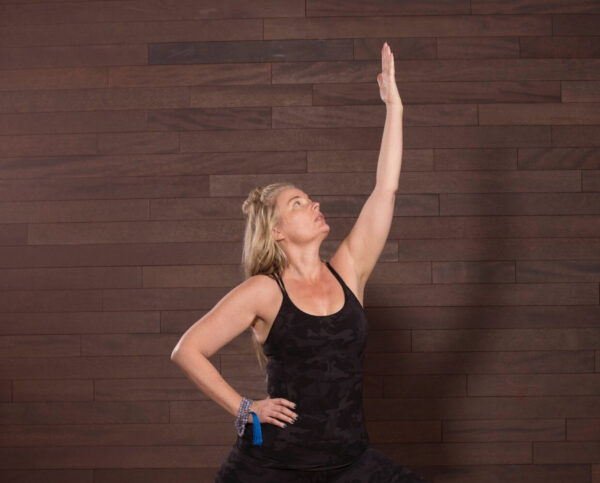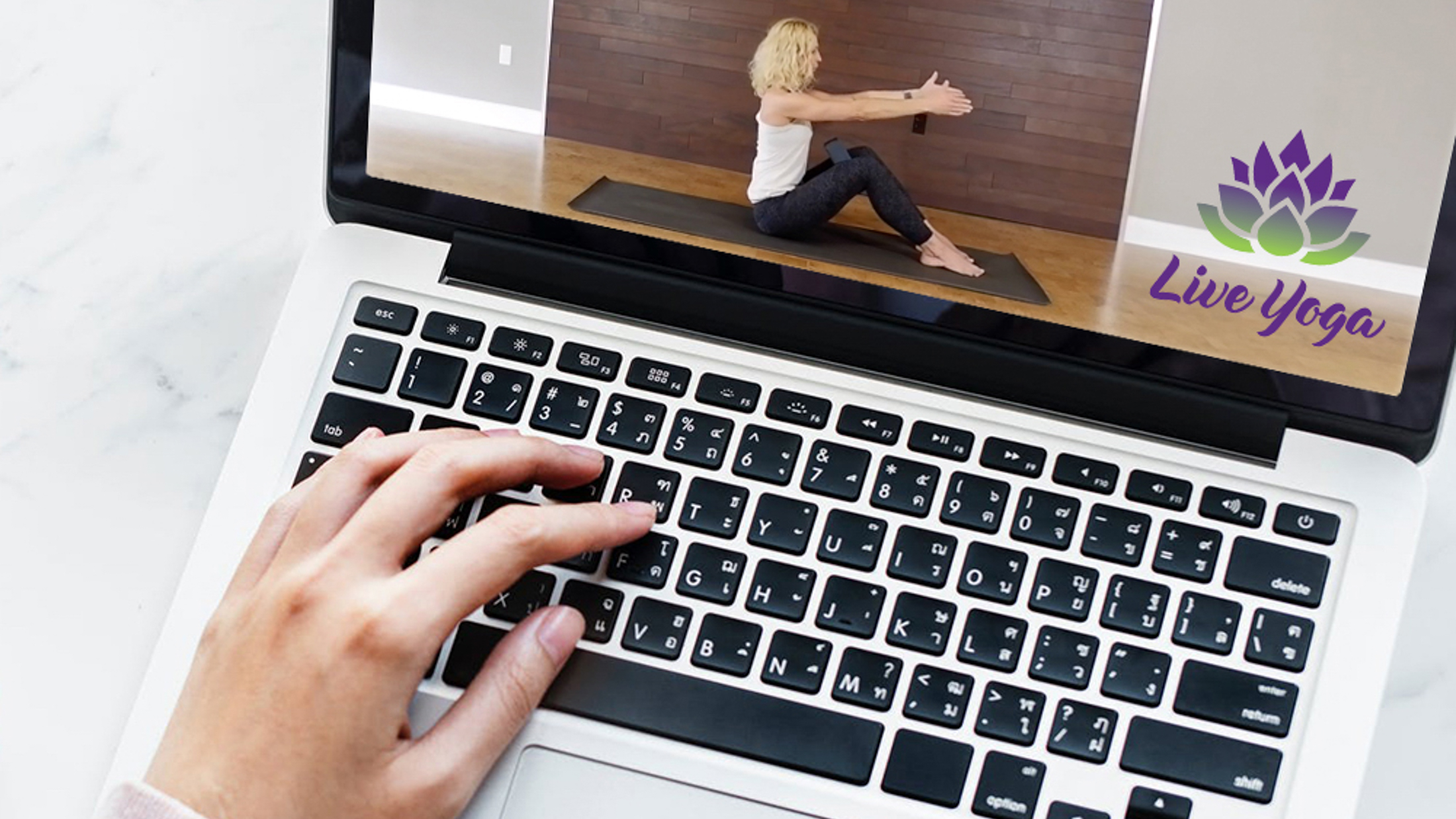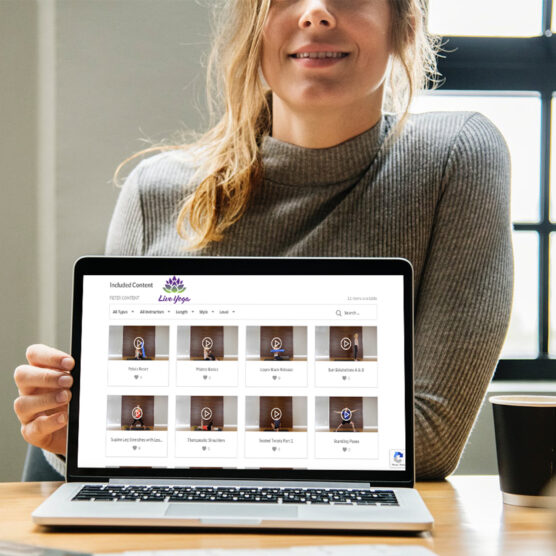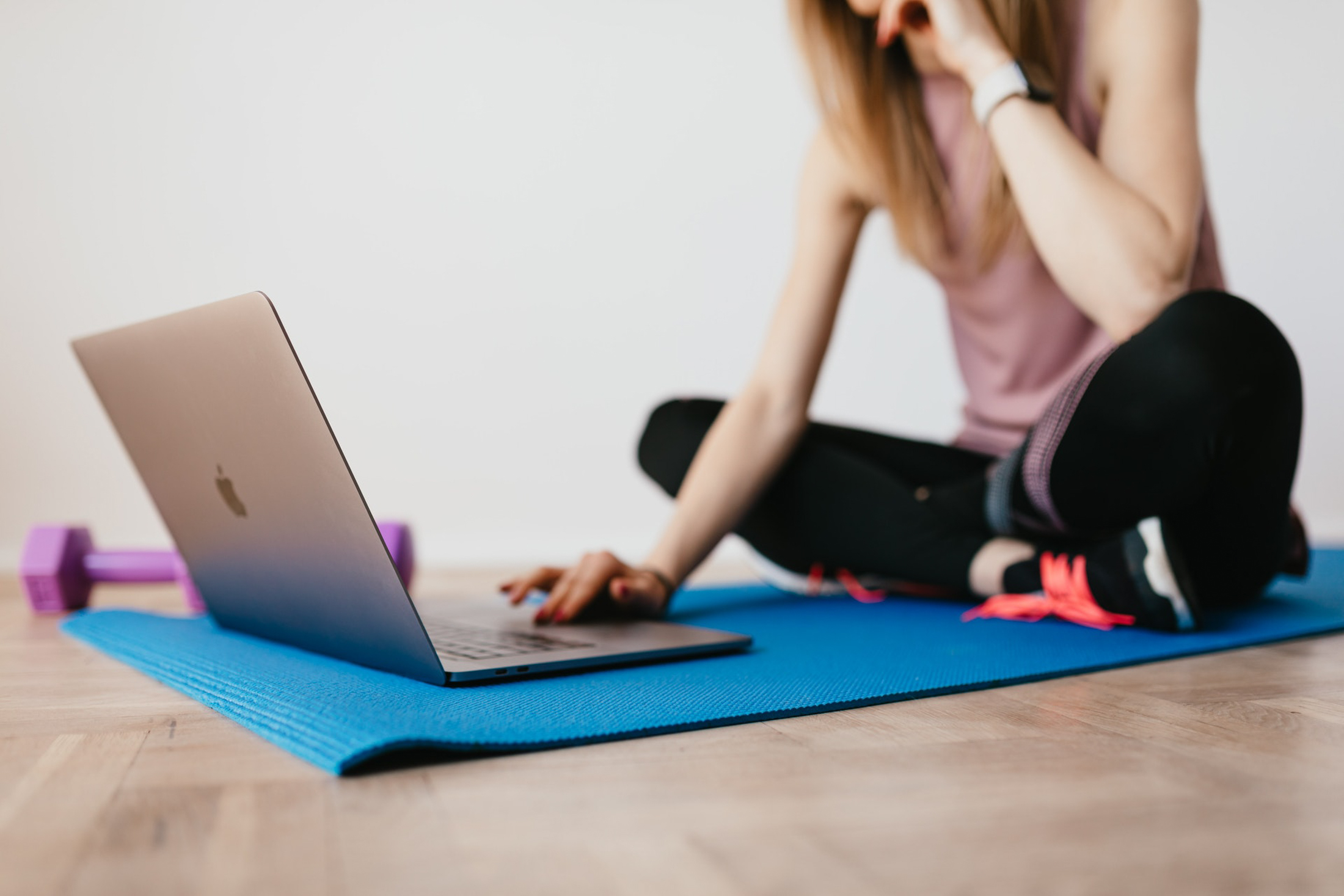When the pandemic shuttered businesses in March, Live Yoga studio owner Amy O’Leary and her husband launched a series of online classes to keep their White Rock business afloat. It was a project they’d wanted to execute for a while, but the consumer appetite hadn’t been there, she says. “Then, now, all of a sudden, the appetite is completely different.”
For a city whose culture seems inextricably linked to hours logged in yoga and fitness studios, Vancouver is seeing a shift to remote routines as the technology required to cope with COVID-19 moves yoga teachers, trainers, and their clients to experiment with online solutions for at-home instruction. The more personalized models that emerge might just create a lasting new norm even after the pandemic someday recedes.
O’Leary says she’s seen hundreds of subscribers to her new online classes, and the platform now boasts more than 100 different prerecorded sessions, which students can stream from home any time. Pivoting to online also provided some work for yoga teachers who weren’t able to teach in-studio due to the lockdown, she notes. “It was a way for us to continue supporting the teachers that were very hard hit.”
The studio has since reopened as some restrictions have eased, but only nine students can attend in person at a time; others can register online to take the class remotely as it’s livestreamed from the studio. For students like Vicki Brydon, it’s a relief to take the class from home.
“It’s just so convenient to do the livestream because I can close my work laptop at 5 p.m. and open up my home laptop and start a class. Whereas, you know, working [from the office], I could never get down there for a five o’clock class.”

Image courtesy of Vicki Brydon.
Curtis Christopherson, president and CEO of Innovative Fitness, a boutique personal training and lifestyle company, says once he decided to close all 12 locations across Canada on March 15, his company also poured money into building an online training platform. “We wanted to keep our community connected as much as possible. We developed our own software,” he says.
The magnitude of his online success surprised him. In April and May, the company delivered nearly 15,000 virtual personal training sessions, he says. It also picked up new clients. “Without any advertising, marketing, or presence in the U.S., we attracted clients from New York, Boston, LA, St. Louis, and Colorado.”
The gyms where one-on-one training is provided have since reopened but with reduced capacity, and staff wear face shields. Sixty to 70 per cent of clients have resumed some amount of in-person training, Christopherson says, but many are now committed to a hybrid model.
“The future of personal training will exist in-studio and online,” he predicts.
Julie Peters, owner of East Vancouver’s Ocean and Crow Yoga, has also pivoted. Under lockdown, she and her teachers held livestreamed classes, but even though restrictions now allow for some in-person teaching, her small studio space makes that a challenge.
“We can fit four people in safely with distancing. But that doesn’t really work for our business model,” she says.
Peters isn’t interested in a hybrid class model like O’Leary’s because she doesn’t want her teachers to divide their attention between two spaces. Instead, she’s using her studio to meet with private clients for one-to-one mindfulness coaching. Teachers are also holding small classes that people can sign up for as a pod. “They pay the teacher as if it’s a private class, and then they can bring a small group—like, you can bring your household.”

Image courtesy of Amy O’Leary.
“We’re probably not going to go back to the way it was before, where we would fit 16 people into that small room,” she adds. “Even when there’s a vaccine, you know, the new normal is just a lot of distance.”
For personal trainer Dianna Walkden, who had already begun dividing her time between coaching people at gyms and building an online training business pre-pandemic, COVID created a business boom.
“We were just getting started,” she says. “It just made us ramp things up, and we could be there for people who needed it.”
Like O’Leary, Walkden says one of the challenges she previously faced was that many people were resistant to working out from home or even outside on their own. COVID changed that.
“There are a lot of clients that we’re finding who would never have thought to work out in their own homes or start to create and invest in a workout space in their home.”

Image courtesy of Amy O’Leary.
Trudi Goels, who uses Walkden’s training business, Three Wave Fitness, says the online model works really well for her, and that she gave up gyms quite a while ago because she found the environment fat-phobic.
But signing up for Walkden’s program around the time the pandemic hit brought its own challenges. “Everyone is sold out of weights, right now. So strength-training equipment, it’s really hard to come by,” she explains. “But that’s okay, I’m getting creative. You know, my weighted blanket in a grocery bag is great for deadlifting.”
Still, not everyone is finding it easy to adapt to at-home training. Although Will Shelling has created a strength training routine for himself, running outside isn’t a comfortable experience.
“I’m Black, and I haven’t really felt comfortable running outside since Ahmaud Arbery got shot.”
Arbery, a Black man, was killed while jogging in a residential area in the southern U.S. state of Georgia in February. Under lockdown, and with his gym closed, Shelling recalls lacing up his shoes one evening around 7 p.m. to head out for a run. He was wearing his workout gear. “I got outside and then I was just—straight up, like, I don’t feel safe going outside.”
Although Shelling went back to his gym after it reopened with pandemic protocols in place, he recently received an email from the gym saying he may have been exposed to COVID-19 during one of his recent workouts.
“My self-monitoring period ends tomorrow, thankfully.”
Following that scare, and with the rising rates of infections in B.C., Shelling doesn’t see himself heading back to the gym any time soon. Instead, he’s seeking out his own set of ever-elusive weight-training gear.
“I’ve been trying to find kettlebells,” he says. “I’m going to be trying to pick one up tomorrow, you know, if I’m feeling well enough to go.”
Find more ways to get moving in Fitness.









